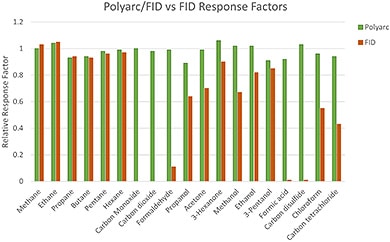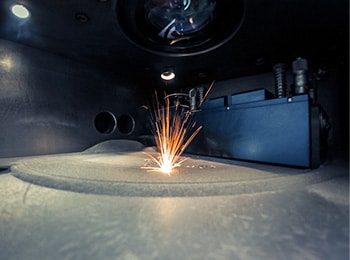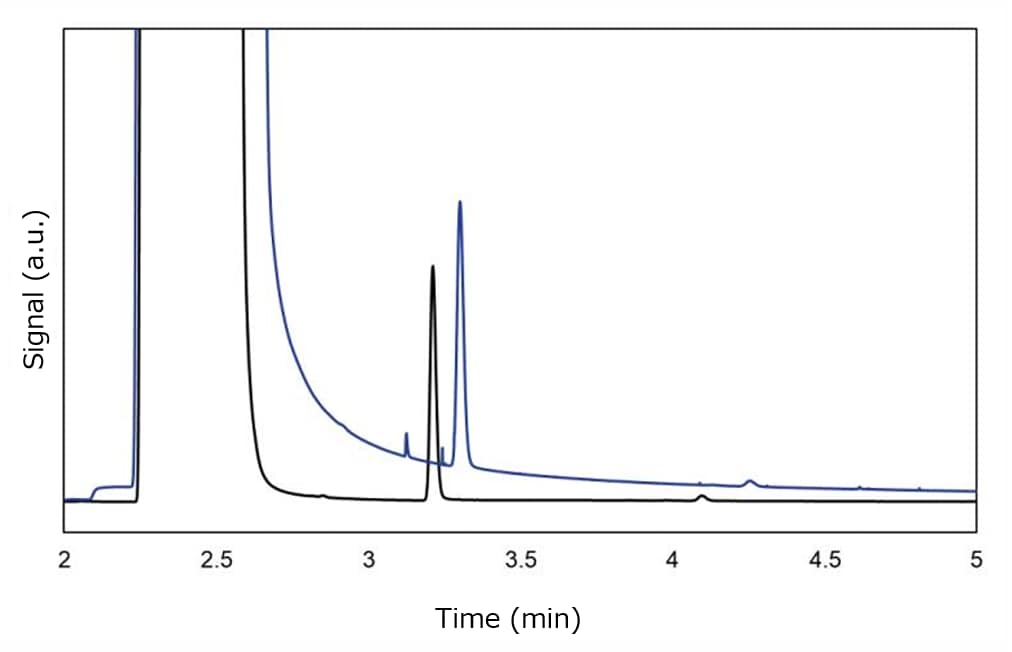Polyarc - Features
A Microreactor for Gas Chromatography
Overcoming Low-response in GC-FID Analysis

The FID has two main challenges: lack of uniform response and low response to certain compounds. The Polyarc enhances your FID to solve these challenges by giving your FID a uniform response to nearly all organic molecules. The result is more accurate data, improved productivity and lab efficiencies, and the ability to detect more compounds.
Transforming the Use of Gas Chromatographs with Flame Ionization Detectors
The Polyarc system has a catalytic microreactor that enhances new and existing gas chromatographs (GCs) with flame ionization detectors (FIDs) by converting all organic compounds to methane molecules prior to their detection by the FID. In doing so, the Polyarc system reduces the need to perform time-consuming calibrations by creating a uniform detector response as a quantitative carbon detector (QCD).
The Polyarc system gives scientists the capability to determine purity, quantify unknowns, qualify products, investigate, improve development and more in a simple, fast, and more economical way that is transforming the industry.
Simplify and Improve GC/FID Quantification
The Polyarc system has a catalytic microreactor that enhances GC/FIDs by converting all organic compounds to methane molecules prior to detection by the FID.
The FID has two main challenges: lack of uniform response and low response to certain compounds. The Polyarc enhances your FID to solve these challenges by giving your FID a uniform response to nearly all organic molecules. The result is more accurate data, improved productivity, lab efficiencies, and the ability to detect more compounds.
Perform Cutting-Edge Chromatography on Any Organic Compound with a Polyarc System
Realize a greater breadth of analysis with improved detection of compounds previously invisible or with an extremely low sensitivity by gas chromatography using FID only — while reducing the need for time-intensive calibration.
The careful selection and robust catalyst design enables the analysis of a wide variety of compounds including a range of heteroatoms, compounds of various sizes, and samples containing common poisons (e.g., S).
Optimized Design and Seamless Integration

The Polyarc system is the first commercial technology of its kind. The device uses proprietary technologies, including novel catalysts and, a specially designed 3D-printed micro reactor, and offers fast, seamless integration into existing equipment.
The optimized internal design and catalyst microstructure maintain separation performance and peak shape while increasing sensitivity and enabling accurate quantification without calibration standards.
Polyarc vs Polyarc Ultra

Figure 1. Sample chromatogram of solvent peak (dichloromethane) showing Polyarc in blue and Polyarc Ultra in black.
Even though Polyarc reactors are designed based on chemical engineering, due to the added volume of the inlet transfer line and reactor body, roughly 5-10% peak broadening is to be expected with the standard Polyarc. Some peak tailing for higher concentrations of compounds is also to be expected. The Polyarc Ultra was designed to address this issue for analyses that require better resolution in these cases by modifying the internal reactor morphology, catalyst microstructure, and flow-path surface chemistry.


